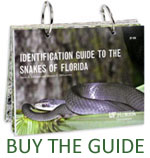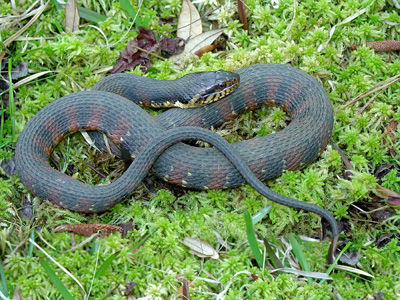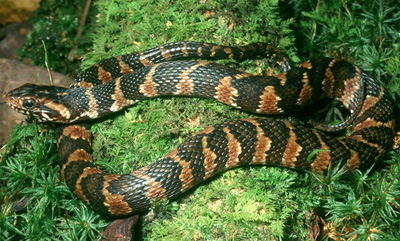Florida's Snakes

Southern or Banded Watersnake
(Nerodia fasciata)NON-VENOMOUS

Banded
Banded Watersnake -
adult (upper image)
and juvenile (lower image)


Photos by John Jensen (upper photo) and Kevin Enge (FWC, lower photo). These photos may not be used without the express written permission of the photographer.
Size:
Usually 2–3.5 ft. (max. 5 ft.)
Identification:
Body color ranges from yellow-tan to reddish or grayish-brown and is marked with darker brown-black crossbands that do not extend onto the belly. Older individuals may be nearly solid brown-black. Belly is marked with irregular dark marks. Obvious dark bands run from each eye to the corners of the jaw. Scales have obvious lengthwise ridges (keels). Like most watersnakes, it is sometimes mistaken for the venomous Cottonmouth, but is thinner and has round eye pupils. Juvenile Plain-bellied Watersnakes look similar, but have yellow or orange bellies. This snake gives birth to live young (does not lay eggs).
Habitats:
Found throughout Florida in freshwater habitats, including rivers, streams, lakes, ponds, canals, swamps, marshes, and wet prairies. It is occasionally found in slightly brackish waters.
Diet:
Crayfish, fish, tadpoles, frogs, toads, salamanders, newts
Map by Monica E. McGarrity - may be used freely for education.
